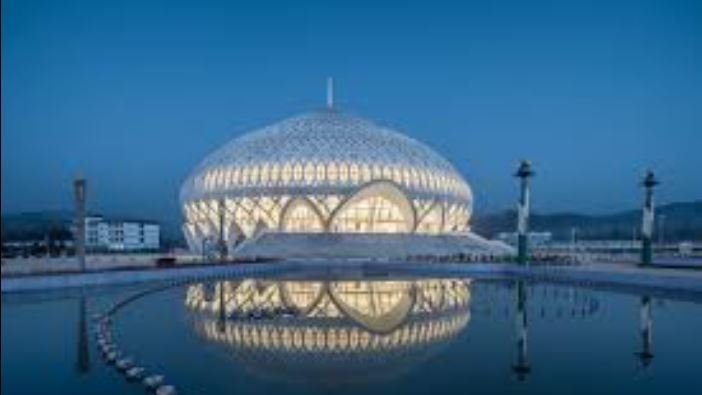The Influence of Islamic Architecture on Contemporary Design
Islamic architecture has significantly influenced contemporary design trends. Offering a rich tapestry of geometric patterns, ornate details, and sustainable practices that resonate with today’s architects and designers. This blog examines the enduring legacy of Islamic architectural principles and their integration into modern design, highlighting their aesthetic appeal, functional benefits, and cultural significance.

Geometric Patterns and Design Aesthetics
Central to Islamic architecture are intricate geometric patterns that adorn mosques, palaces, and public spaces. These patterns, including stars, polygons, and arabesques, symbolize unity, infinity, and the beauty of creation. In contemporary design, architects and interior designers draw inspiration from Islamic geometric motifs to create visually striking facades, interior spaces, and decorative elements that evoke a sense of harmony and mathematical precision.
Integration of Light and Space
Islamic architecture emphasizes the interplay of light and shadow, creating dynamic spatial experiences that reflect spiritual and cultural values. Courtyards, light wells, and lattice screens (Mashrabiya) are integral features that optimize natural light, enhance ventilation, and ensure privacy. Contemporary architects incorporate these principles into sustainable building designs, utilizing daylighting strategies, energy-efficient glazing, and shading devices to minimize energy consumption and enhance occupant comfort.
Sustainability and Environmental Stewardship
Islamic architecture has long embraced sustainable practices that respect natural resources and climatic conditions. Techniques such as passive cooling, water management systems, and use of local materials exemplify an eco-conscious approach to design. In contemporary architecture, these principles are integrated into green building certifications and sustainable development projects that prioritize energy efficiency, carbon neutrality, and resilience to climate change impacts.
Adaptability and Cultural Expression
The adaptability of Islamic architectural principles across diverse cultural contexts underscores their universal appeal and relevance in contemporary design. From the Alhambra in Spain to the Sheikh Zayed Grand Mosque in Abu Dhabi, Islamic architecture transcends geographical boundaries. Influencing architectural styles and urban landscapes worldwide. In today’s globalized society, architects blend traditional Islamic elements with modern technologies and materials to create culturally responsive and contextually relevant designs.
Influence on Urban Planning and Public Spaces
Islamic cities historically featured souks, caravanserais, and mosque-centered urban layouts that fostered community interaction and social cohesion. Contemporary urban planners integrate these concepts into mixed-use developments, pedestrian-friendly streetscapes, and sustainable urban infrastructure projects. The emphasis on human-scale design, communal gathering spaces, and walkable neighborhoods reflects Islamic principles of social equity, accessibility, and environmental stewardship.
Artistic and Technological Innovation
Islamic architecture’s legacy of artistic innovation extends to contemporary design through advancements in digital fabrication. Parametric modeling, and sustainable building materials. Architects leverage computational tools and 3D printing technologies to reinterpret traditional motifs and create bespoke architectural elements that merge craftsmanship with cutting-edge design. This fusion of artistry and technology enhances spatial aesthetics and structural integrity in modern architectural projects.
Educational and Cultural Preservation
Efforts to preserve and promote Islamic architectural heritage contribute to cultural awareness and educational initiatives worldwide. Museums, research centers, and architectural tours highlight the historical significance and enduring beauty of Islamic monuments. Inspiring future generations of architects to incorporate these timeless principles into their design philosophies. By honoring the past while embracing innovation, contemporary architects uphold the legacy of Islamic architecture and its transformative impact on global design practices.
Conclusion
In conclusion, Islamic architecture continues to exert a profound influence on contemporary design. Enriching built environments with its aesthetic elegance, sustainable principles, and cultural symbolism. From geometric patterns to passive design strategies, Islamic architectural traditions resonate with architects, designers, and urban planners. Especially those seeking to create meaningful, inclusive, and environmentally responsible spaces. As the world embraces cultural diversity and sustainability, the legacy of Islamic architecture remains a source of inspiration and innovation in shaping the future of global architecture.



